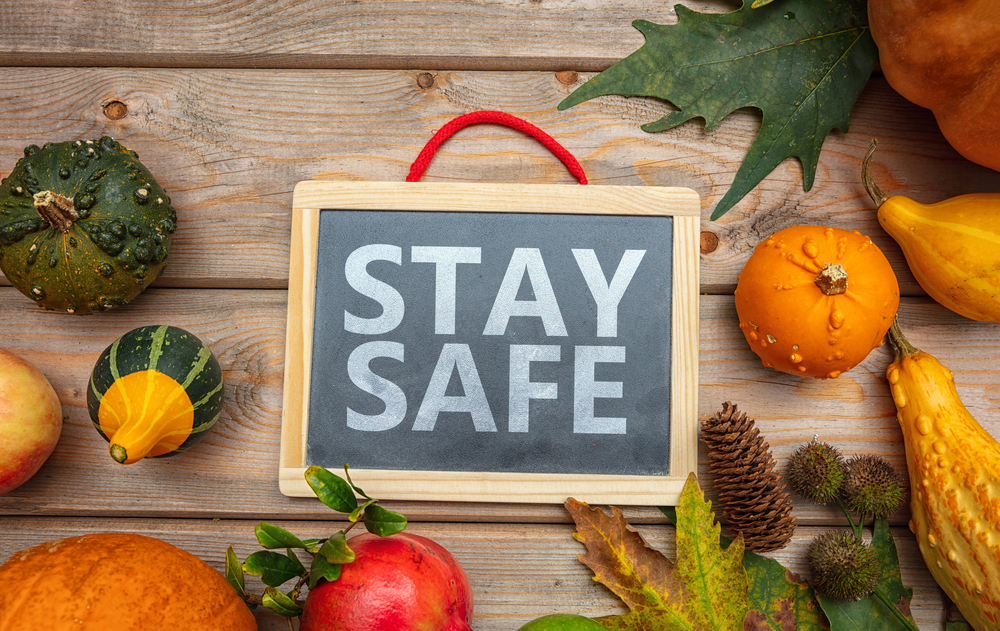Some of the busiest holidays in America — Thanksgiving, Christmas, and New Years — bring floods of people into airports, who are all looking to travel across the country to see family that they might not have seen all year. Normally, the last few months of the year bring plenty of opportunity for those families to meet each other over pounds of food and gift exchanges. The year of 2020, however, is anything but normal. The coronavirus has put a halt to any and all ideas of what was once considered typical. This virus has been ravaging the world for almost a year now, and the country has managed to still celebrate some holidays, such as the Fourth of July, as summer weather allowed for outdoor gatherings where it was easy to social distance, and harder for the virus to spread. Now that winter is coming on, however, these get-togethers will have to be inside the homes of Americans, with far more risk of transmission. As cases climb and hospitals fill, one has to ask what the appropriate course of action is for Americans who want (understandably) to visit family during the holidays, while this pandemic is surging forward with little end in sight.
As scientists have been concerned about since the beginning of this pandemic, the world appears to be entering a second wave of coronavirus cases. After opening up during the summer months, Europe is introducing new restrictions limiting which businesses can open, as well as night curfews for citizens, as they see cases beginning to surge across the continent. Due to far less restrictions than Europe, and the lack of a cohesive federal response to COVID, America never really cleared the first wave of the virus. While the summer months saw a decline in cases, recently the country set a new record of 90,000 cases in a single day, bringing the total cases to nearly 9 million just in the U.S. As cases rise, hospitals are quickly beginning to fill up, which when this virus first hit led to people dying in hallways of hospitals, mass burials, and hospital workers not having proper equipment to protect themselves from the virus. While in the summer it appeared as if the country was past those horrible conditions, the colder months have brought a reminder of the fact that the world is still very much in the midst of this pandemic.
As the temperature grows colder people are coming in contact more often in enclosed spaces, which increases the spread of the virus. But there is also the issue of pandemic fatigue. This virus has taken over every aspect of life, putting extra stress on everyone’s lives. People have had to create new routines and question behaviors that they once thought completely normal, like hugging grandma. People are growing weary of the fact that life is not what it once was, and that there is an ever-present threat that continues to loom over the entire globe. This exhaustion can lead to an increase in cases as people begin to exercise more risky behavior, like dining inside or going to large events, as if we’ve beaten the virus. As we head into the holidays it makes sense that people want to spend time with their loved ones, especially ones that they haven’t seen for months. The winter months already see a combination of seasonal depression with regular depression among people, and COVID certainly led to a decline of mental health among Americans. The rates of both suicides and opioid overdoses have become very concerning for public health experts who warn of an underlying mental health crisis as a result of the stress and anxiety surrounding the coronavirus. People have been isolated from their families and friends for months because of travel restrictions, and now is the time when people most often travel to see their loved ones. It makes perfect sense that people would want to gather for comfort and strength in these very uncertain and stressful times. Many families have lost loved ones — there are over 230,00 deaths in the U.S. currently — and this is the first time that they will have to experience these holidays without those people present. Grief is a powerful emotion, and mixed with pandemic fatigue, this may lead to people willing to take more risks in order to seek comfort in their families.
The winter holidays are most definitely some of the busiest days of the years for travel, either by car, plane, or other transport. This creates a big risk for people who want to visit their families, but need to visit airports to make it home. Just last year over 45 million people traveled on American airlines throughout the globe over this time period. Considering the fact that many countries have restrictions on who can come in, and America is often on the list of those nationalities who are not allowed in, that number will most definitely be lower. Masks are required throughout the airports and during the flight, which would make it seem as if these flights were quite safe. A new study even came out recently which concluded air travel was safer than eating at a restaurant, albeit this study was sponsored by the air industry, which is desperate for flyers due to the loss of revenue from air travel being restricted throughout the entire globe. A recent long distance flight to Ireland, however, questions the validity of this study as 13 passengers tested positive for the coronavirus on the flight, and then passed it on to people in Ireland, for a total of 59 cases all linked to this flight. Throughout the pandemic, the coronavirus has shown how little we actually know about the virus, as even mask wearing was once deemed not important by health officials. But now calls for a national mask mandate have been amplifying, as they have proven to be extremely effective in stopping transmission of the virus. So the question of risk regarding air travel remains up in the air.
This last year has probably been one of the most stressful, if not the most stressful, period of most people’s lives around the world. This virus is something that none of us can ignore because it affects everyone. If it takes the whole world to spread the virus, it seems it is going to take the whole world working together in order to stop it. This end appears to still be quite a ways off, however, and people are still left with a feeling of inevitableness of this eternal feeling of waiting. Understandably, the first instinct for a lot of people might be to reach out to those closest to them. Some might want to continue decades-long traditions that their families have carried on in an attempt to find a sense of normalcy in these strange times. The Centers for Disease Control (CDC) has information on their website to help people make responsible decisions if they decide to have some sort of celebration for the holidays. But, one must remember that these are strange times, and any contact with people outside those you live with carries some level of risks. As with most things during this pandemic, people will have to consider the risks of celebrating the holidays this year with those they hold most dear.


